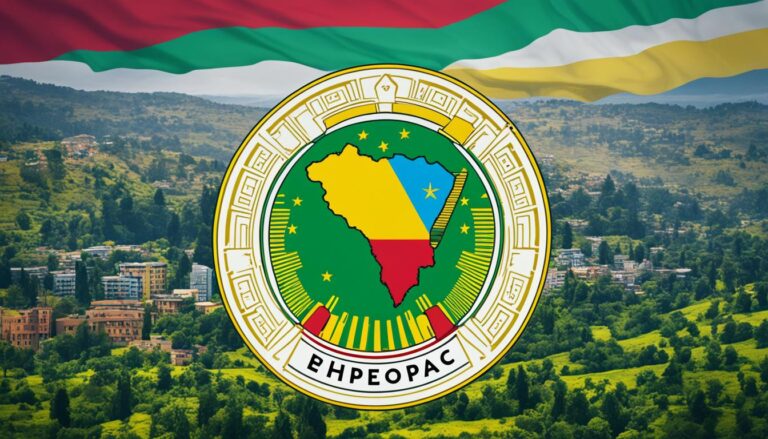What Are Some Traditional Cultural Practices In Ethiopia?
Traditional Cultural Practices in Ethiopia
The traditional cultural practices in Ethiopia are deeply rooted in the rich history and diverse ethnic groups that make up the country. These practices have been passed down from generation to generation, contributing to the vibrant tapestry of Ethiopian heritage. From colorful celebrations to unique rituals, Ethiopia’s traditional cultural practices play a significant role in shaping the country’s identity.
One of the most prominent cultural practices in Ethiopia is the tradition of coffee ceremonies. Coffee holds a special place in Ethiopian culture and is an integral part of social gatherings and ceremonies. The coffee ceremony is a symbol of hospitality and friendship, where roasted coffee beans are ceremoniously ground, brewed, and served to guests. It is a time for people to come together, share stories, and strengthen bonds.
Another traditional cultural practice in Ethiopia is the art of injera making. Injera is a spongy flatbread that serves as a staple in Ethiopian cuisine. The process of making injera involves fermenting teff flour and cooking it on a large round griddle. Injera is not only a food item but also a symbol of community and togetherness, often shared among family and friends during meals.
Ethiopian culture is also known for its distinctive traditional clothing and accessories. Each region in Ethiopia has its own unique style of dress, reflecting the diversity of the country’s ethnic groups. From the brightly colored fabrics of the Oromo people to the intricate embroidery of the Amhara tribe, traditional clothing plays a vital role in preserving Ethiopia’s cultural heritage.
Music and dance are essential components of Ethiopian cultural practices, with various traditional dances and rhythms showcasing the country’s artistic expression. From the energetic Eskista dance to the graceful Amharic music, music and dance serve as a means of passing down stories, values, and traditions from one generation to the next.
The traditional cultural practices in Ethiopia are a testament to the country’s rich history, diversity, and strong sense of community. From coffee ceremonies to traditional clothing and music, these practices continue to play a crucial role in preserving Ethiopia’s cultural identity and heritage for generations to come.
The Impact of Coffee Ceremonies on Ethiopian Culture
One of the most revered cultural practices in Ethiopia is the traditional coffee ceremony. This ritual, known as "Bunna," plays a significant role in Ethiopian social life, bringing people together to share stories, build relationships, and celebrate community bonds. The coffee ceremony is more than just a quick caffeine fix; it is a symbol of hospitality, respect, and friendship deeply ingrained in Ethiopian culture.
The process of preparing and serving coffee during the ceremony involves meticulous steps that have been passed down through generations. It typically begins with the roasting of green coffee beans over hot coals, filling the air with a rich, aromatic fragrance that signals the start of the ceremony. The freshly roasted beans are then ground by hand using a wooden mortar and pestle, emphasizing the importance of craftsmanship and tradition in Ethiopian culture.
As the coffee is brewed in a traditional clay pot called a "jebena," the host carefully monitors the process, ensuring that the coffee reaches its optimal flavor. Once ready, the coffee is poured into small cups known as "cini," which are offered to guests as a symbol of friendship and respect. The act of serving coffee is a gesture of goodwill, inviting guests to partake in a moment of connection and camaraderie.
The significance of the coffee ceremony extends beyond the drink itself; it is a symbol of Ethiopian identity and heritage. The ceremony transcends social boundaries, bringing people together irrespective of their background or status. Through the shared experience of partaking in the ritual, participants forge lasting bonds and strengthen community ties.
In Ethiopian culture, the coffee ceremony is more than a simple beverage break; it is a time-honored tradition that embodies the values of hospitality, togetherness, and inclusion. By preserving and promoting this cultural practice, Ethiopians uphold their rich heritage and continue to pass down centuries-old customs to future generations. The coffee ceremony serves as a reminder of the importance of connection, conversation, and camaraderie in a rapidly changing world.
Traditional Ethiopian cuisine is distinct and flavorful, with injera playing a crucial role in its identity. Injera is a spongy flatbread made from teff flour, a gluten-free ancient grain indigenous to the region. This staple food is not only a dietary mainstay but also holds cultural significance in Ethiopian cuisine.
In Ethiopian culture, the process of making injera is a communal and time-honored practice. Women often gather in groups to prepare the batter, ferment it, and cook the injera on a large round griddle known as a mitad. This collaborative effort fosters a sense of community and togetherness, as the women exchange stories, songs, and wisdom while working together.
The injera itself serves as a versatile utensil in Ethiopian dining customs. It functions as both a serving platter and an eating utensil. Various stews, vegetables, and salads are placed on top of the injera, which acts as a base and an edible accompaniment. Diners tear off a piece of injera and use it to scoop up the savory dishes, creating a unique and interactive way of enjoying a meal.
Moreover, injera is not only a practical element of Ethiopian cuisine but also a symbolic one. Its round shape represents unity and wholeness within Ethiopian culture. Additionally, the fermentation process of making injera aligns with the country’s long history of fermentation practices in food preparation, highlighting the importance of preserving traditional culinary methods.
In Ethiopian households and restaurants, the act of sharing a meal on a large injera platter is a cherished custom that embodies hospitality, kinship, and cultural pride. Whether celebrating religious festivals, weddings, or other significant events, injera remains at the heart of Ethiopian culinary traditions, reinforcing the country’s rich cultural heritage through its deep-rooted connection to communal dining experiences.
Traditional Cultural Practices in Ethiopia
Traditional clothing and accessories hold significant cultural importance in Ethiopia, reflecting the country’s diverse cultural heritage and rich history. One of the most iconic traditional garments is the "shamma," a handmade cotton wrap worn by both men and women. The shamma comes in various colors and patterns, with each design often representing a specific ethnic group or region within Ethiopia. In addition to the shamma, women commonly wear embroidered dresses called "habesha kemis," which are adorned with intricate patterns and designs. These garments are not just everyday clothing but are also worn during special occasions and cultural celebrations, emphasizing their cultural significance and the pride Ethiopians take in their traditional attire.
Accessories also play a vital role in Ethiopian traditional culture. Jewelry, such as necklaces, bracelets, and anklets, crafted from materials like gold, silver, and beads, are popular among both men and women. Jewelry is often passed down through generations and worn as a symbol of familial heritage and status. Moreover, headwear, such as turbans and headscarves, are common accessories that vary in style and design based on the region or ethnic group. These traditional accessories not only add a decorative element to the attire but also serve as markers of identity and cultural pride.
Furthermore, body art is another traditional practice that holds cultural significance in Ethiopia. Scarification, a form of body modification where scars are deliberately created on the skin using specific tools, is a common practice among some ethnic groups in Ethiopia. These scar patterns hold symbolic meaning, representing aspects such as tribal affiliations, courage, or beauty. While scarification practices have declined in urban areas, they remain prevalent in rural communities as a way to preserve cultural identity and heritage.
Traditional clothing, accessories, and body art are integral components of Ethiopian culture, representing a complex tapestry of traditions, beliefs, and identities. The preservation and continuation of these practices not only honor the country’s diverse cultural heritage but also serve as a form of cultural expression and pride for the Ethiopian people.
The Role of Music and Dance in Preserving Ethiopian Heritage
Ethiopia, a land rich in cultural diversity and history, holds a deep-rooted tradition of music and dance that plays a significant role in preserving its heritage. The rhythmic beats of traditional Ethiopian music and the graceful movements of various dances have been integral parts of the country’s identity for centuries.
Music in Ethiopia is as diverse as its people, with various ethnic groups across the nation contributing to a tapestry of sounds and rhythms. From the hypnotic sounds of Amharic music to the energetic beats of Oromo tunes, each region boasts its unique musical style. Traditional instruments like the krar (a lyre), masenqo (a single-stringed fiddle), and kebero (a drum) are commonly used in Ethiopian music, adding a distinct flavor to the melodies.
Dance is another vibrant expression of culture in Ethiopia. The country is known for its intricate and lively traditional dances that are often performed at social gatherings, religious ceremonies, and festivals. These dances not only entertain but also convey stories, emotions, and beliefs, making them an essential medium for passing down folklore and traditions from one generation to another.
Moreover, music and dance are deeply intertwined with Ethiopian religious practices. The Ethiopian Orthodox Tewahedo Church, which has a long history in the country, incorporates music and dance into its worship services. Traditional religious chanting and dance forms are integral parts of religious holidays and ceremonies, adding a spiritual dimension to the cultural significance of music and dance in Ethiopia.
In modern times, music and dance continue to evolve in Ethiopia, blending traditional elements with contemporary influences. Emerging artists are incorporating traditional rhythms and dance moves into modern genres, creating a fusion that appeals to both local and international audiences. This fusion not only attracts a new generation to traditional art forms but also ensures that age-old practices remain relevant in a rapidly changing world.
The role of music and dance in preserving Ethiopian heritage is undeniable. These art forms serve as vessels of cultural expression, connecting people to their roots and fostering a sense of identity and belonging. As Ethiopia embraces the future, its rich musical and dance traditions will undoubtedly continue to thrive, carrying forward the legacy of a nation steeped in cultural vibrancy and artistic prowess.
Conclusion
In Ethiopia, traditional cultural practices play a significant role in preserving the rich heritage of the nation. From vibrant coffee ceremonies to the iconic injera and traditional clothing, these practices reflect the values, history, and identity of the Ethiopian people. The impact of coffee ceremonies on Ethiopian culture goes beyond just serving a beverage; it is a symbol of hospitality, community, and social connection. Through these ceremonies, Ethiopians come together to bond, share stories, and celebrate their cultural roots.
Moreover, the importance of injera in Ethiopian cuisine cannot be overstated. This spongy, sourdough flatbread is not only a staple food but also a symbol of unity and togetherness. The practice of sharing a communal meal on a large platter, with injera as the base, fosters a sense of belonging and camaraderie among family and friends. Injera represents more than just a type of bread; it embodies the essence of Ethiopian hospitality and kinship.
In Ethiopian culture, traditional clothing and accessories hold a special place, reflecting the diverse ethnic groups and regions of the country. The intricate designs, vibrant colors, and handwoven fabrics showcase the craftsmanship and artistry of Ethiopian artisans. Whether it’s the iconic white cotton dress of the Habesha kemis or the colorful shawls worn by the Oromo people, traditional clothing not only embodies cultural pride but also serves as a way to pass down customs and traditions from one generation to the next.
Music and dance are integral elements in preserving Ethiopian heritage, as they are deeply intertwined with rituals, ceremonies, and festive occasions. From the energetic shoulder-shaking eskista dance to the soul-stirring melodies of traditional instruments like the krar and masinko, Ethiopian music and dance are a form of expression that transcends language and connects people on a spiritual level. These art forms carry the stories, memories, and emotions of the past, ensuring that the cultural legacy of Ethiopia endures for generations to come.
Traditional cultural practices in Ethiopia are not merely customs or rituals; they are living expressions of the country’s identity, history, and values. The coffee ceremonies, injera cuisine, traditional clothing, and vibrant music and dance all play a vital role in shaping the cultural landscape of Ethiopia. By preserving and celebrating these practices, Ethiopians honor their heritage, promote unity and diversity, and create a legacy that will continue to inspire future generations. As Ethiopia moves forward in the modern world, these traditional cultural practices remain foundational pillars that uphold the nation’s unique identity and spirit.





